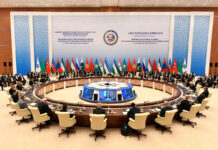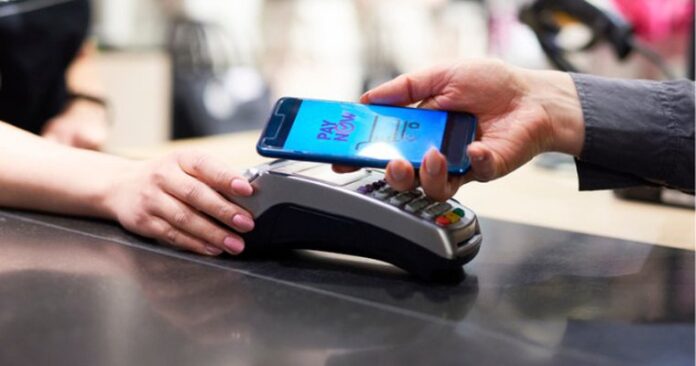Let’s start with a kicker. For the first three quarters of fiscal year 2021-22 ending March 31, 2022, Rs 502.7 billion worth of payments were processed on point-of-sale (PoS) machines. On all PoS payments, the acquirers, the financial services entities that deploy those machines, charge a merchant discount rate (MDR). Assuming an MDR of 1.5%, Rs7.5 billion would have gone to these entities to be distributed between the acquirers, card issuers and payment schemes. An additional 16% FED tax is charged by the government, all paid for by the merchants that accepted those payments at their retail outlets.
For some of these merchants, most likely a small fashion retailer, a small pharmacy store or a shoe retailer, this tax would be a big problem. Already burdened by the multi-tiered taxation by the federal government and provincial and local authorities, this tax along with one more charge paid to the banks is enough for some of these retailers to not have digital payment options at their outlets. The consequence? A heavily cash denominated economy that comes with its own inefficiencies, lack of transparency and an asymmetric taxation system which further incentivises staying out of the tax net for retailers. In short, without digital payments these days, it could be a wreck for the economy and consequently a wreck for the retail economy, all segments alike.
Unsurprisingly, in the case of digital payments at retail again, it starts with an unfair taxation system where organised retail is burdened with taxes, increasing their cost of business and decreasing their competitiveness against unorganised retail, which then stays in the undocumented economy because it comes with more earnings, simply. For instance, fashion retailers claim that they are burdened with 20-25% additional taxes because they are registered and compliant with authorities, and the decrease in margin because of that makes them uncompetitive against unorganised fashion retailers.
Some other segments of retail have low margins to begin with and any additional taxation or charges would keep them from using means that help them grow, eventually. Acceptance of digital payments in this case, decreases the costs that come because of operating on cash and saves time. However, certain segments of retail are being disincentivised because of the charges associated with accepting digital payments, cards in particular; the most prevalent method of payments at retailers; fashion, groceries and others, besides cash, because of the MDR charged by banks for giving PoS services to merchants. The question in all of this is that in a taxation system which retailers consider unfair and which disincentivises digital payments, is the MDR blocking the adoption of digital payments and is reduction of this chare a plausible scenario?
How card payments impact margins
“Percentage of bank charges [the MDR], varying between 1-1.5% of the turnover value, can turn out to be a big charge,” says Rana Tariq Mehboob, CEO of fashion retail brand Royal Tag and the chairman of the Chainstore Association of Pakistan (CAP). “Consider sales of say Rs 10 million at a fashion retailer’s outlet. At that value, at 1.5% rate to banks, the retailer pays Rs 150,000 to banks for accepting payments on cards. Add to that another 16% FED tax, the payment swells to over Rs 174,000, which is a significant hit on the bottomline of retailers.”
“There are certain withholding taxes on turnover. There is a withholding tax of 1.25% on invoice value with certain retailers. There are also other costs associated with tax compliance. So if small margin retailers start paying 1.5% to banks, their margins shrink significantly,” says Mehboob.
This has turned out to be a big pain point for some categories of retailers. In fact some of the big retail segments such as mobile phone retail and jewellery retail, are significantly underpenetrated for digital payments. That is because in certain segments of retail, margins are low enough that a charge of 1% is an incentive to avoid acceptance of digital payments.

The cell phone industry for instance is understood to be operating at a 5% profit margin. If a retailer sells a phone for Rs 100,000, he is only making Rs 5,000 in profit on that sale. At 1.5% paid to banks and a 16% FED is an additional charge of Rs 2,300 on top, which reduces the Rs 5,000 profit to about Rs 2,700.
The case is similar with small grocery retailers, which have very narrow margins. Fashion retailers have healthy margins but are unhappy, especially the smaller ones, paying the additional MDR and FED tax that eats away their profits. On the other hand, for the unorganised retailers, accepting digital payments is a means towards creating transparency for taxation purposes and getting burdened with the multi-layered taxation that would make them uncompetitive once they are a part of organised retail.
Meanwhile, jewellery retailers are speculated to be avoiding card payments as a means to shirk from the burden of taxation and compliance with the government regulations and consequently stay a part of unorganised or undocumented retail.
Can the MDR be reduced?
The pains, however, can be alleviated to a certain extent if banks reduce the MDR charges. This was one of the demands of the oil marketing companies (OMCs) after fuel stations stopped accepting card payments or started recovering the MDR charge from the customer. In a letter to the State Bank Governor, the OMCs asked to cap the MDR at 0.3%. This would mean that the merchants, fuel stations in this case, would have to pay less from per litre price for accepting card payments. The rationale provided by them was that since the fuel industry margins are regulated, a percentage charge of 1.5-2% is a significant hit on their bottomline.
There was no rationale provided by OMCs of how the MDR could be capped at 0.3% but it is not an unlikely possibility at all. First though, what do retailers get when they pay an MDR.
According to Atyab Tahir, former country head of Mastercard in Pakistan, the 2-2.5% MDR (the effective rate merchants pay after adding the FED tax), is effectively less than the cost of carrying cash for a retailer and eventually in an economy in which the rupee is depreciating on an ongoing basis. This means that if a retailer puts up a PoS machine, his costs should come down automatically. Cash reconciliation is costly and time consuming, forecasting becomes difficult, and there is a chance of theft and leakages with cash payments that retailers do not account for when considering acceptance of digital payments.
The other fear that is left then is that by increasing card acceptance, unorganised retailers are giving visibility to authorities over their financials and eventually tax them. In such a scenario, MDR charges become an additional burden that is eating profits. But if it is somehow achieved, the virtues for the economy are manifold.
For this reason, the government should actually provide incentive to the acceptance of digital payments so that retailers don’t see it as a burden.
“There is a ripple effect of digitising cash payments at retail outlets, and that ripple effect has a greater advantage for the revenue collection for the government, for digitising of the cash economy, for the reconnaissance of the merchant services and the merchants,” says Atyab.
That incentive was provided by the Punjab government when it reduced the sales tax to 5% on card payments. Earlier, the State Bank of Pakistan (SBP) incentivised the PoS acquiring business to push the proliferation of machines. PoS acquirers are financial services entities that onboard merchants and deploy the payment point of sale machines at retail outlets.

In December 2020, the SBP issued a circular which carried directives for the uplift of digital payments in Pakistan. Among its directives, the SBP increased the merchant discount rate and fixed it in the range of 1.5%-2.5%. This means the average price per transaction increased for a merchant because the earlier cap was less than 2.5%. Out of the total charges, the acquirers cut was increased substantially and the issuer’s cut was capped at 0.5%. So let’s say an acquirer charges a fashion retailer 2% on each transaction made using a debit card. Out of that 2%, the issuer’s share is capped at 0.5% and the major share goes to the acquirer who has to bear the cost of importing and deploying costly PoS machines.
The third party in the transaction, the payment schemes such as Visa, Mastercard, China Unionpay and PayPak, get a cut which averages around 10 paisas per transaction.
Because the acquirers were incentivised with a higher cut on a transaction, POS acquiring became a worthwhile business. Consequently, the PoS machines in Pakistan have increased to about 97,000 machines as of March end this year, according to data from the State Bank of Pakistan. This number has jumped from about 40,000 POS machines for card payments before the SBP issued the circular. This increase in number shows that the retailers are inclined towards installing POS machines and accept cards as a mode of payment. This assumption would be particularly true since for the fashion industry, most of the prominent brands that have organised chains accept cards at their outlets. And PoS payments overall are a retail phenomenon.
With the MDR, however, the concern is that for certain segments of retail, it is unbearable because it takes a hit on their margins. Even the fashion retail industry, which enjoys better margins, would avoid it if they had the chance because the cost of doing business is already quite high because of all the taxation.
When OMCs wrote the letter to SBP to reduce the MDR to 0.3%, they must have thought it through. Because banks make money on many other fronts, they can afford to not charge an MDR or charge it at a substantially less rate.
Because when a bank issues its customer a debit card, it is already making money on the deposits from that customer. Then the customer is charged issuance and annual charges on the card which are high to begin with and then the merchant is charged an MDR. Merchants have their accounts with banks too, and banks are making money on deposits from the merchants as well.
Because of this reason, capping the MDR at, say 0.5%, would not be considered unviable for the banks and it would have long-term benefits for the economy and the digitisation of retail. It would not be unviable if the State Bank further lowers the MDR because the biggest card issuers in the country are also the biggest POS acquirers. HBL, UBL, MCB, Alfalah are all acquirers and the biggest issuers of debit cards in the economy (HBL alone has about 5.5 million cards in the market).
Their income comes from many streams. Deposits from customers, deposits from merchants, issuance and annual fee on cards and then the acquirer and issuance interchange. There is a case that can be made that in the presence of multiple income streams, MDR can be rationalised further to push digital payments that will promote transparency and eventually help with taxation, which will help rationalise taxes for retail.
In fact a source in the industry critiqued that the earlier incentive provided by the central bank missed an important component that would have incentivised card payments better. “When you have to incentivise digital payments in the beginning, pricing matters a lot,” says the source.
“The acquirers were incentivised by increasing their cut from the MDR when in fact the government should have been asked to decrease taxes on the import of the PoS machines and decrease their costs, while the MDR should have been decreased to make it more acceptable to retail merchants,” he says.
This would have promoted fair pricing in the beginning, giving the necessary push, and would have still incentivised acquirers that are not banks. Besides the four banks mentioned above, the two three acquirers are Nigerian fintech OPay, Pakistani fintech Keenu and Meezan Bank. Both Keenu and OPay would have relied on an increased cut on the acquiring side from the MDR to be viable businesses but with a lower cut on the MDR but tax incentives on the imports would have been a fair deal.
This would have to be done concomitantly with the acquirers deploying more machines in low-tier cities. Currently, the concentration of PoS machines is in top cities, Karachi, Lahore and Islamabad only.
Zia ul Haq, director and head of acquiring division at OPay Pakistan, says that the banks need to find a way to increase the spend on the cards by customers. “The purpose of debit cards is to decrease cash based transactions so that customers dont have to go ATMs to withdraw cash and then pay for a retail transaction.”
“When that happens, even a lower MDR rate, which would be more acceptable to merchants, would translate into a higher income for the banks,” says Zia.

At the current scale, says Zia, even the FED tax on such payments should be abolished until the payments volume reaches a scale of a few trillions of rupees yearly, which as mentioned above, stands at Rs 502.7 billion for three quarters. When that is achieved, and that would be achieved if a lower MDR leads to more merchants deploying card machines and customers increasing their spend on the debit cards, any tax, which is currently a deterrent, would lower payments volumes and value to a point where they would still be significantly higher.
This will eventually lead to retailers of all sorts, from fashion to fuel and pharmaceuticals, that consider digital payments a burden on their bottom line, coming to digital payments, creating that ripple effect in the economy that has virtues for everyone. Organised retail will grow and those already part of the organised retail will grow further.
The way it is arranged right now, the MDR is encouraging cash more than it is incentivising digital payments. Consider this example: if a customer buys a shirt for Rs2,500 from a fashion retailer and the retailer asks for an additional 2% if the customer pays through the card, it increases the price of the shirt by Rs50. The additional cost would not only make the retailer more expensive and consequently less competitive, it would also prompt the customer to go to an ATM nearby and withdraw cash against a charge smaller than the MDR. The customer might withdraw more cash than required for the shirt and then go on to use cash for more transactions. In this way, a high MDR would very well be increasing the cash transactions and presents a case for it to be lowered.


























Excellent article and a need of the times. Govt needs to understand that the high MDR especially in the highly competitive grocery category is killing any impetus for digital payments.
We deployed a payment gateway at the start on our website but the 3% deduction made along with logistics cost most of our orders unprofitable, so we had to turn it off as customers are willing to go to another (mostly unorganised) shop for just 10 Rs. difference.
It’s impossible to work properly with digital payments and pay taxes and pay ever increasing bills when the majority of your profits goes to someone else.
A very theoretical article missing ground realities. There is no way that in the existing economic scenario, the federal and provincial governments would lower the taxes. Also acquiring entities need to recover their cost and also make some profits. Banks are also interested in making more and more profits. Finally, many merchants and businesses simply don’t want to digitise and document their business. A better way to move forward is to adopt non-card based payments via SBP’s Raast system. SBP should set up the merchant acquiring business themselves and absorb all the cost to foster adoption.
yes ! It’s impossible to work properly with digital payments and pay taxes and pay ever increasing bills when the majority of your profits goes to someone else.
6 billion digital payments were made in India in Octover 2022 alone. Steps taken to implement this:
– Jan Dhan Yojana was implemented in 2014-15 to ensure that 99% of households had a bank account.
– Unified Payment Interface (UPI) -something similar to your RAAST I think, was introduced in India in April 2016.
– Demonetozation coupled with 0 MDR on UPI transactions was implemented in 2016 November
– National GST was implemented in July 2017 to increase formalization of economy.
Combined impact was dramatic acceleration in digital payments and increase in tax to GDP ratio from 11% to 14%.
My husband and I are another successful client of Cyber Genie Intercontinental among many. I read countless positive reviews about how they have been using their cyber expertise to help people achieve their happiness back by recovering their scammed or lost Bitcoin and assets from fraudulent and posers of Cryptocurrencies trading companies. After reading many of the wonderful services they render, I had to contact them because my husband was seriously defrauded by some Chinese bitcoin miners, it all ended in goodwill as we were able to recover what we thought we had lost to scammers. Contact them on [ Cybergenie AT cyberservices DOT com ] WHATSAPP [ +1 ] 2.5.2-5,1,2-0.3,9.1 ] and help yourself from depression.
Logical and prudent!
Digital payments have revolutionized the way we make transactions, and CVS Pharmacy is no exception. With the increasing popularity of digital payment methods, CVS has embraced this trend to provide a seamless and convenient experience for its customers.
A recent survey conducted in the USA found that a significant number of CVS customers prefer using digital payment methods over traditional cash or card payments.Cvs health survey allows us to share our feedback about store and in return lucky customers have a chance to win $1000. This shift in consumer behavior reflects the growing trust and acceptance of digital payments in the retail sector.